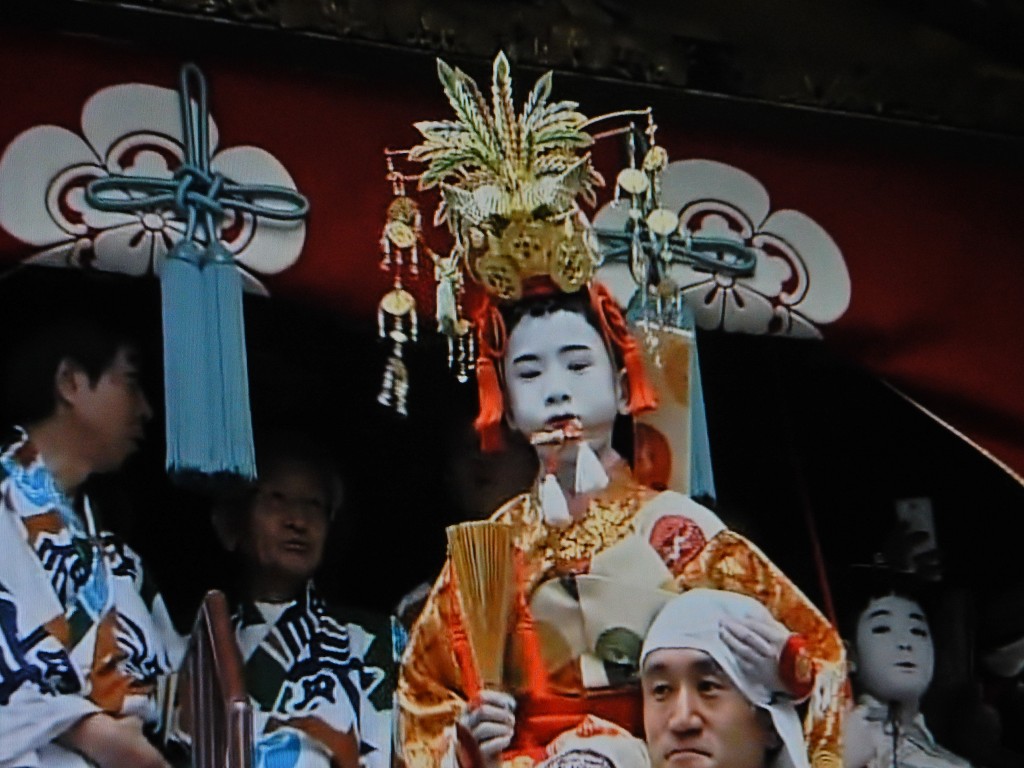
The parade begins with the chigo getting into position at the front of the leading Naginata float
Last year was a historic year for the Gion parade, with two processions being held for the first time after 49 years. This follows the inscription in 2009 of the festival as an ‘Intangible Cultural Heritage’ by Unesco. “The floats come in two varieties,” states the registration, “yama floats with platforms decorated to resemble mountains and hoko floats dominated by tall wooden poles originally intended to summon the Plague God so that he could be transformed into a protective spirit through music, dance and worship.”
Today is the major procession, with 23 floats taking part. A week later will be the second procession, containing 10 different floats. There are various preliminary rituals and events, but the grand parade kicks off at 9.00 on July 17th with the tall Naginata float.
Last year there were more foreigners than usual amongst the crowd, according to the tv commentators, leading to greater vocal appreciation of the manoeuvres involved. On the other hand there were fewer foreign participants (just 9 of them) because of a stipulation by the International Exchange Center that volunteers should take part in both today and next week’s procession.
*******************************************
For a report on Yoiyama (the eve of the parade), see here or here or here. For the removal of the kami into the mikoshi (portable shrine), see here. For a talk about the festival by Catherine Pawsarat, click here. For the Western input, see here, and more about chigo here. The washing ritual of the mikoshi, here, more about the floats here, and the return of the mikoshi to Yasaka Jinja here.
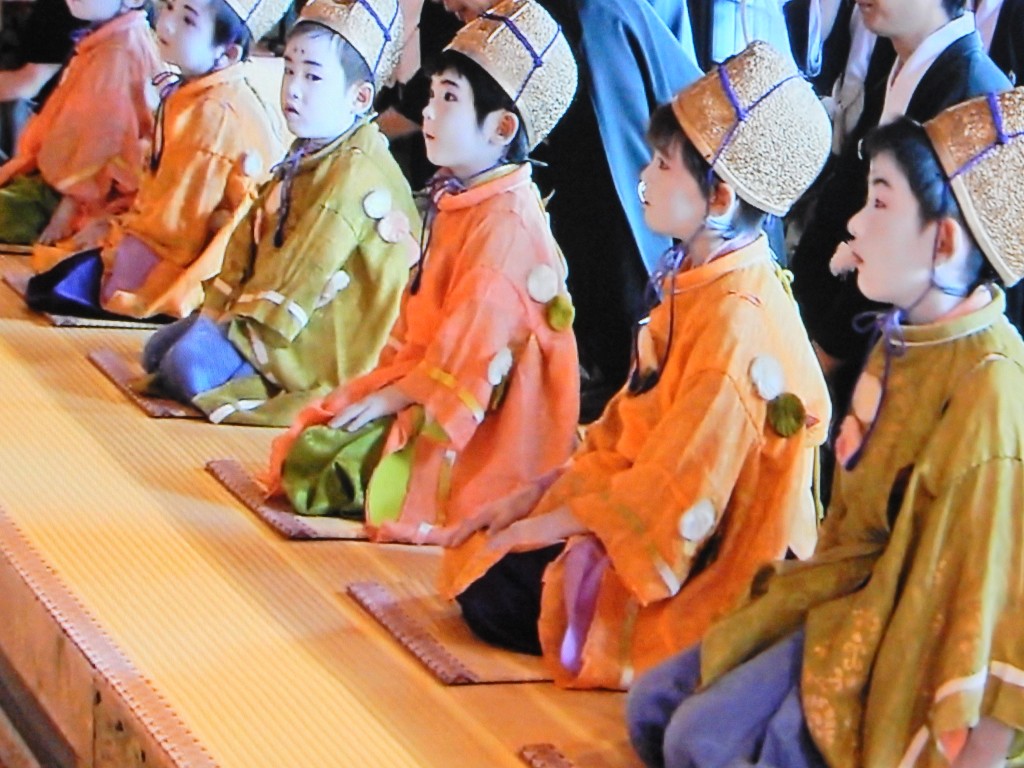
One of the many pre-parade rituals is the purification of participants, such as these ‘chigo’ from the Ayagasa float
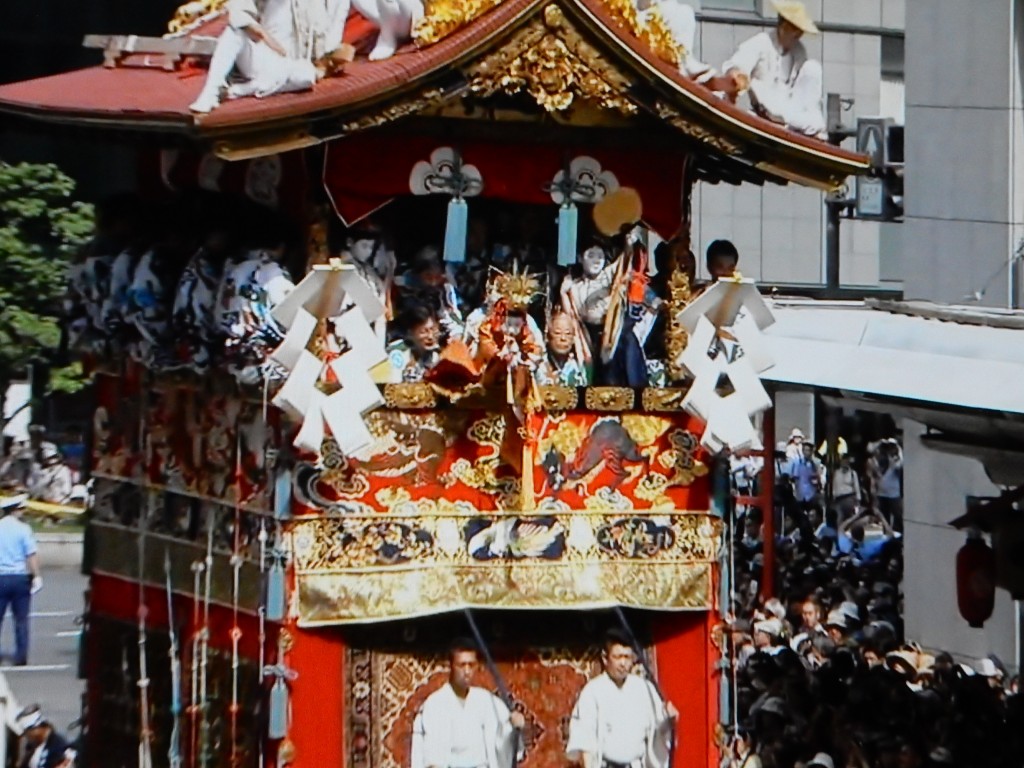
The Naginata float is a teeming mass of humanity reaching up to the skies, with men perched on the roof eight meters off the ground
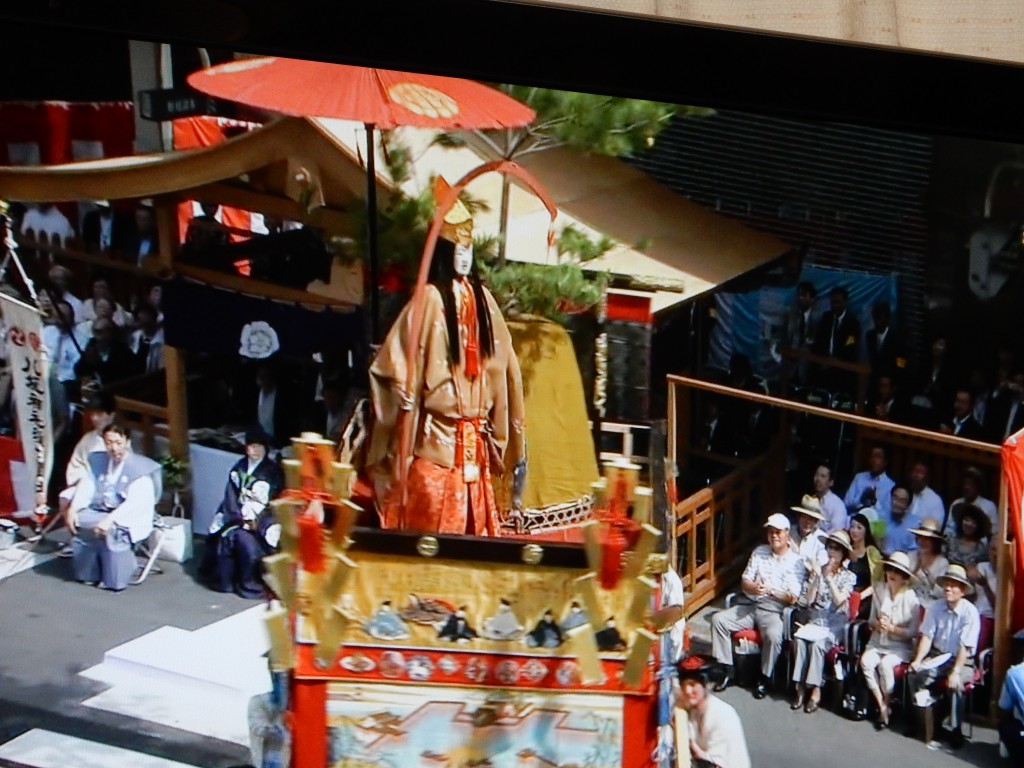
The order of the procession is different every year, and this year the float with Jingu Kogo was second in the parade. The shamaness holds a fishing-rod with which she caught ‘ayu’ fish, used for divination.
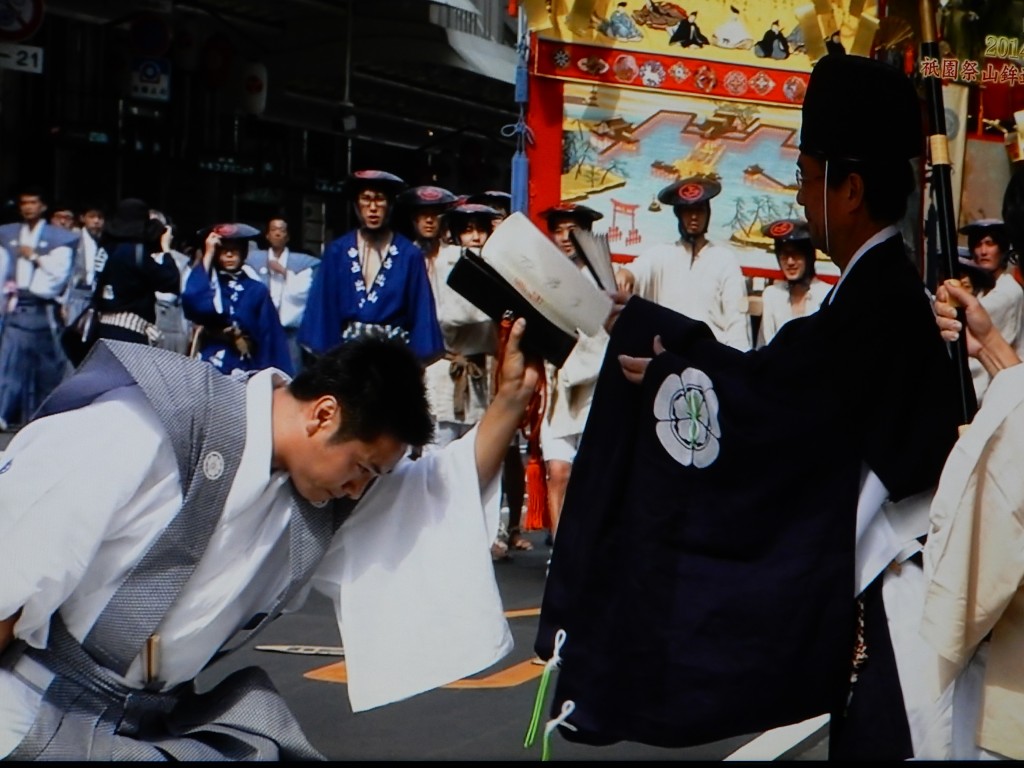
As each float passes the presiding official, a representative has to show the official certificate detailing their position in the parade
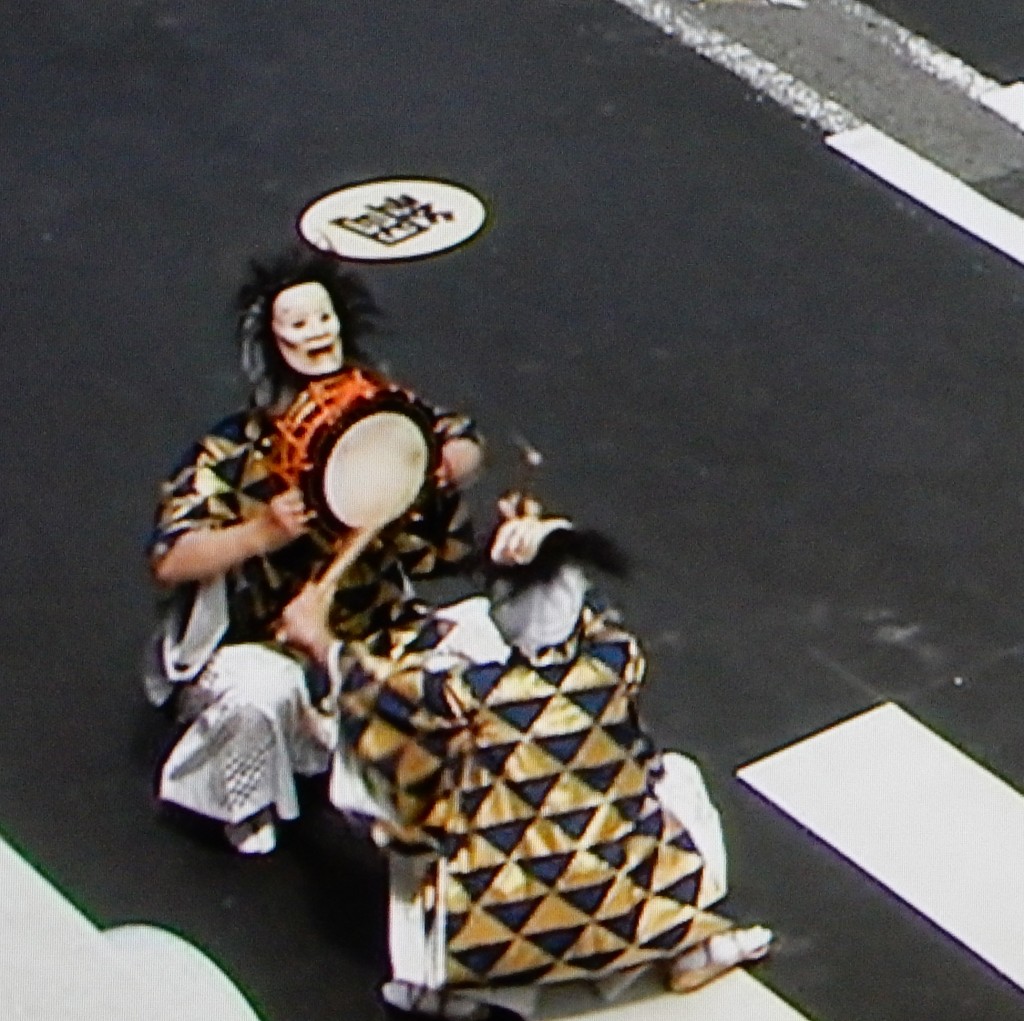
During the procession there are dance and musical events for the entertainment of the kami, as here with a demon masked partipant holding a drum for his companion to beat
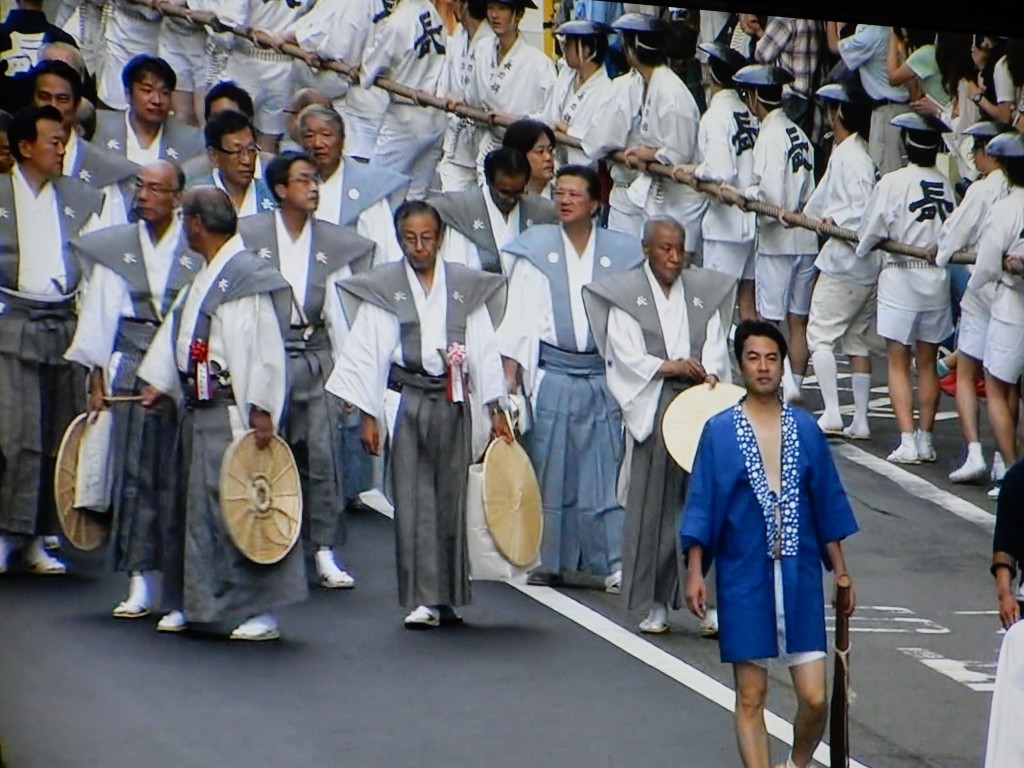
Each community turns out in its best livery to support their neighbourhood float
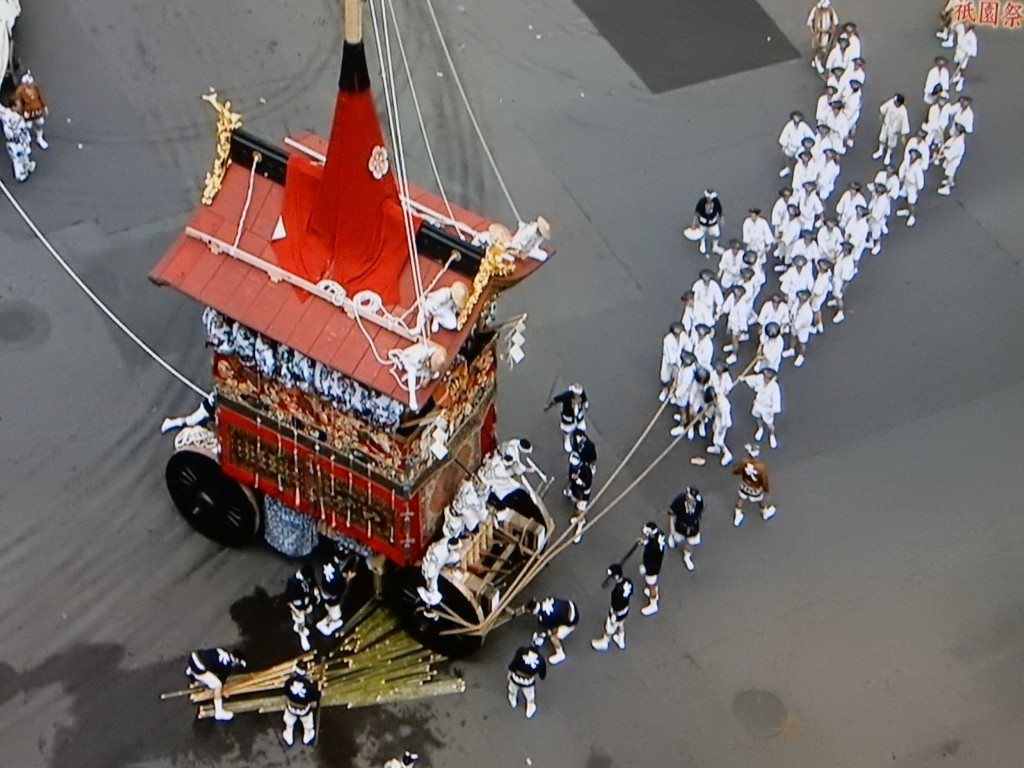
Getting the cumbersome wooden floats to turn round corners is quite an operation, since the wheels are fixed and cannot change direction. Turning involves slipping bamboo strips beneath the wheels.
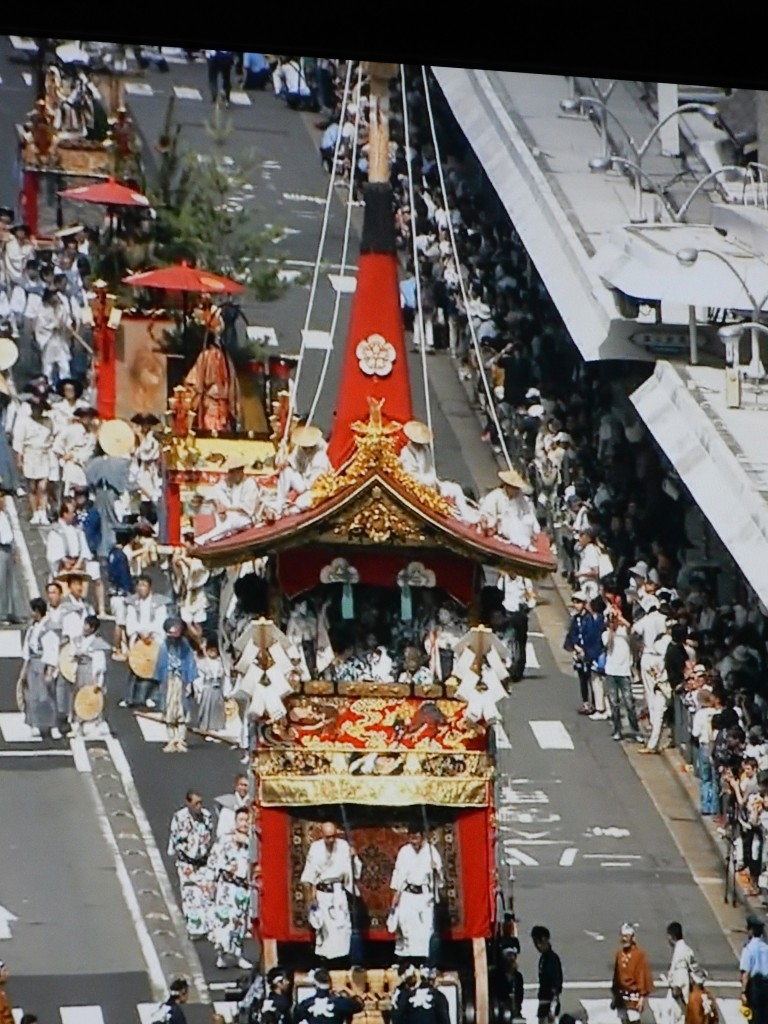
Today’s procession in full flow, with two different types of float evident ‘yama’ and ‘hoko’

Leave a Reply